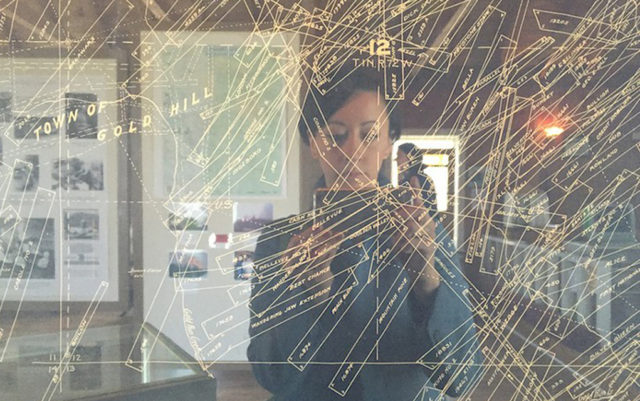
History lies close to the surface in Gold Hill. It’s tangible in the town’s rustic and sometimes dilapidated buildings, in the charred woods that tell of fires not-so-long past and in the mountains that have been shaped by orogeny as much as they have by mineral extraction. But most palpably, history lives in the people who call Gold Hill home, many of whom have lineages dating back to the 1850’s when the town became synonymous with the Colorado Gold Rush.
The town evolved from the characteristic boom-and-bust cycle of mining towns into what it is today — a small mountain town with a population hovering around 250, where everybody knows each other and outsiders are easily spotted. Accessible only by steep mountain roads, the town is just enough off the beaten path to maintain the small town feel, while the cities that lie at its feet swell in their own kind of economic boom.
A few years ago the town welcomed a few new residents, the family of Laurie Britton Newell. As an art curator used to living in bustling metropolises like New York and London, Newell entered into a quieter chapter of life. She moved into a house built in 1910 just off of the town’s main street.
“Lots of people say to me that I live in a really old house, but it’s actually the youngest house that I ever lived in,” she says. “It is actually hard to imagine for me how recent the history is here. Notions of history are so different in different places — for many Americans Gold Hill is a really historic place but it seems so new to me.”
Struck by the strong dialogue between past and present in Gold Hill, Britton Newell began working on the Gold Hill Art Project, a pop-up contemporary art exhibition put on by Black Cube, a nomadic art museum based in Denver. The exhibition is a site-specific exploration of different versions of history that incorporates Gold Hill’s unique stories to conjure ideations beyond any particular time or space.
The show features three contemporary artists, but the curation of the show is an art in its own right. Positioned as both newcomer and resident, outsider and insider, Britton Newell is acting as a steward for both the audiences that will come to experience the show and the townspeople integral to its production.
In her last curatorial position, she worked with historical collections at London’s Victoria and Albert Museum and has since adopted the mentality that art is most successful when it deals with history.
“Perhaps it has to do with precedence,“ she says. “When art relates with something familiar, with something that someone can understand because she can see the connection to the past, it breaks down the walls that make art seem foreign, as something difficult to get or understand.”
In the Gold Hill Art Project, it isn’t just the psychological barriers that are coming down, but the physical walls of the gallery. At a time when art institutions are desperate to make art feel relevant to contemporary audiences, they are seeking ways to go beyond the confinement of museums to engage audiences in their own environments.
A non-profit museum, Black Cube is the embodiment of temporal and wandering art. Unlike traditional art viewing spaces defined by their walls, Black Cube has no permanent exhibition space. Instead, it brings art into existing spaces and challenges the idea that art must be seen in a particular setting or understood in a certain way.
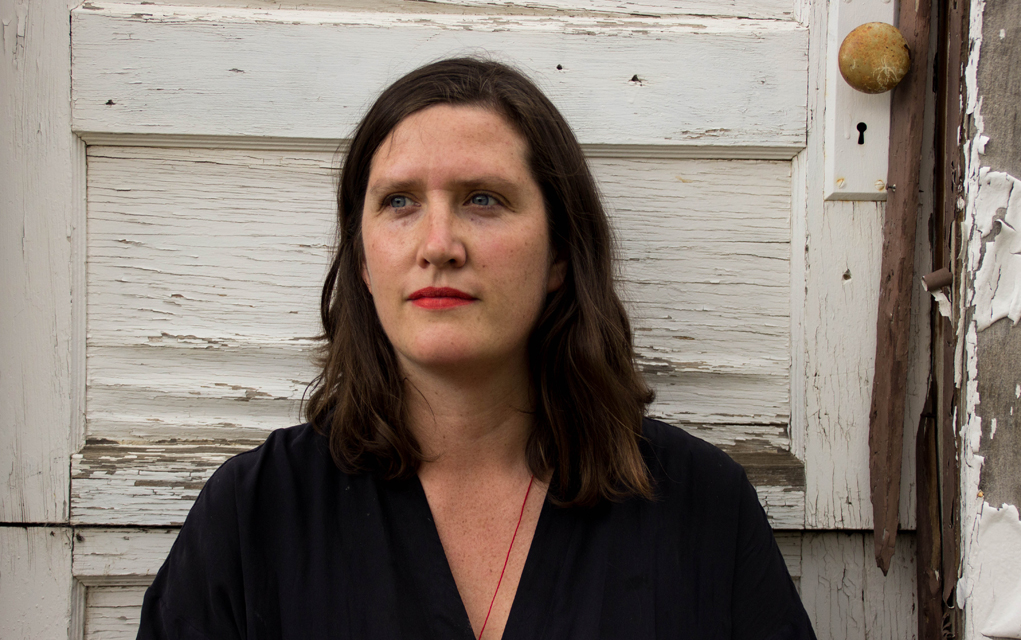
The heart of the Gold Hill project is in the ways it engages with the local community. Artist Molly Berger does this most specifically in her piece “Mementos/Monument” that was conceptualized and created through a nearly yearlong interview process with Gold Hill residents in which she asked them to share their personal memories of life in the town.
“When I first visited Gold Hill, it became immediately clear that I was in a place that I hadn’t been before, and I was oddly aware of my position there as an outsider in a way that is really only possible with being in a town that size,” Berger says. “You would never go visit Denver and feel like other people noticed that you were an outsider, even if you felt uncomfortable some place unfamiliar.”
Over the course of the year, she became recognizable to the townspeople and felt as if she crossed an important threshold. Inspired by that transition, Berger embroidered welcome mats with text of statements made by individuals of Gold Hill. To residents of the town, the words will be recognizable, maybe even attributable, a sort of insider’s joke for those in the know. But the mats will have a different relevance for tourists, bringing to the surface a fundamental tension in the Gold Hill Art Project as the line between insider and outsider is clearly drawn.
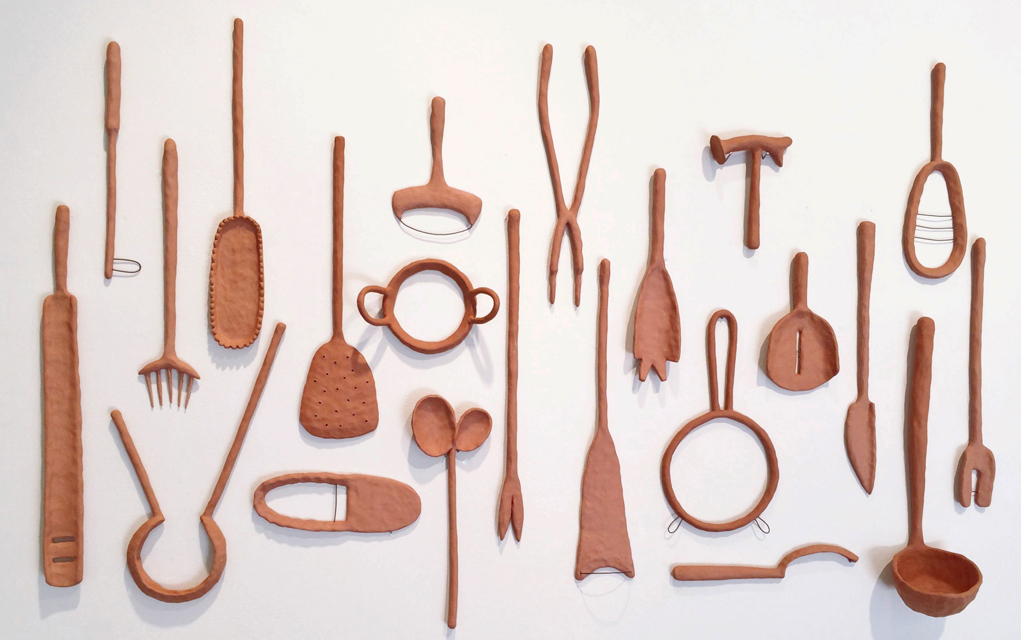
The second part of Berger’s installation plays on a common practice in rural communities — the hanging up of functional objects on walls for decorative purposes. This simple act takes a useful item and transforms it into the aesthetic. Inspired by this memorialization, Berger created a series of porcelain tool-like objects to hang on the side of a historic shed.
“I am always exploring how nostalgia plays in the development of our history,” Berger says. “Memories are often so opaque and full of fallacy and yet they are really the foundation on which so much of our identity is built, not just on the intimate and personal level, but for our larger communal history.”
In turning useful objects into art, Berger questions what it means to treasure something, whether a memory or a thing, in an exploration of the endearing imperfection that exists in the fondness of memory.
But flaws in memory are not always so coy, and the work of artist Jennifer Ling Datchuk explores that perversion of history. There is a tendency to think of history as firm and absolute, but Ling Datchuk is interested in the ways that history is biased and therefore fictional. She is of Chinese-American heritage and a lot of her work is an exploration of that duality.
“Growing up I always had a fascination with the Wild West, and I always heard stories about the Chinese that came here to build the railroads during the Gold Rush,” Ling Datchuk says. “But I found very few photos or documentation.”
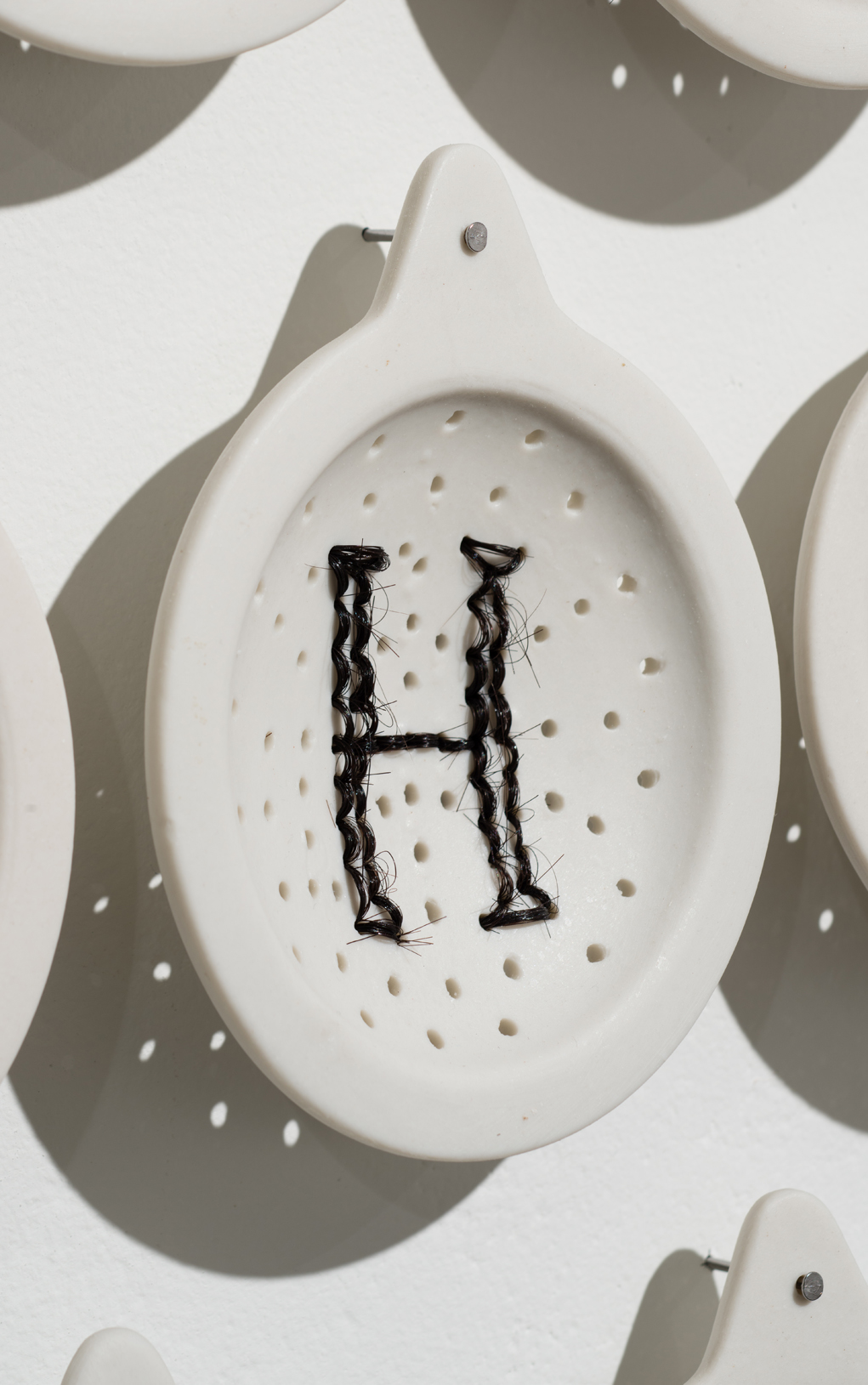
Instead she unearthed stories of the migrant experience through oral histories about a place in town called “Slaughterman’s Ditch” or “Chinamen’s Ditch.”
As the story goes, the people of Chinese heritage who lived in Gold Hill in the 1800s were forced to dig the irrigation ditch that runs through town and were then slaughtered. It turns out the story is fictional, nothing more than a tale to scare kids. But it is nonetheless loaded with the history of stereotype, racism and violence that accompanied mining culture in the West.
Her piece, “Star Crossed Visitors,” is close to the site associated with Slaughterman’s Ditch at a crossroads on the west end of town. It is a monolithic sculpture of a washtub made of concrete, flickering with specks of gold and mica, that stands in stark contrast to the otherwise distressed wooden architecture in town. Inside the tub are small porcelain drains, stitched with real Asian hair to spell out the title of the piece.
“My piece is titled ‘Star Crossed Visitors’ because [Chinese immigrants] came to this country for the potential for a better life, but they were seen as the other,” she says. “Eventually they were forced out and more or less forgotten. It makes me really sad to see that happening again today in the xenophobia and the fear of the other that is going on in this country.”
Importantly though, Ling Datchuk is a self-declared optimist. While she recognizes that she is bringing up what is an uncomfortable part of the history of Gold Hill, she says her inspiration to create the piece is in large part due to how active the community is in preserving their history.
“I am showing this history with a sense of hope and not degradation,” she says. “In many ways the residents of Gold Hill are stewards of this place and it is my greatest hope this strengthens that history.”
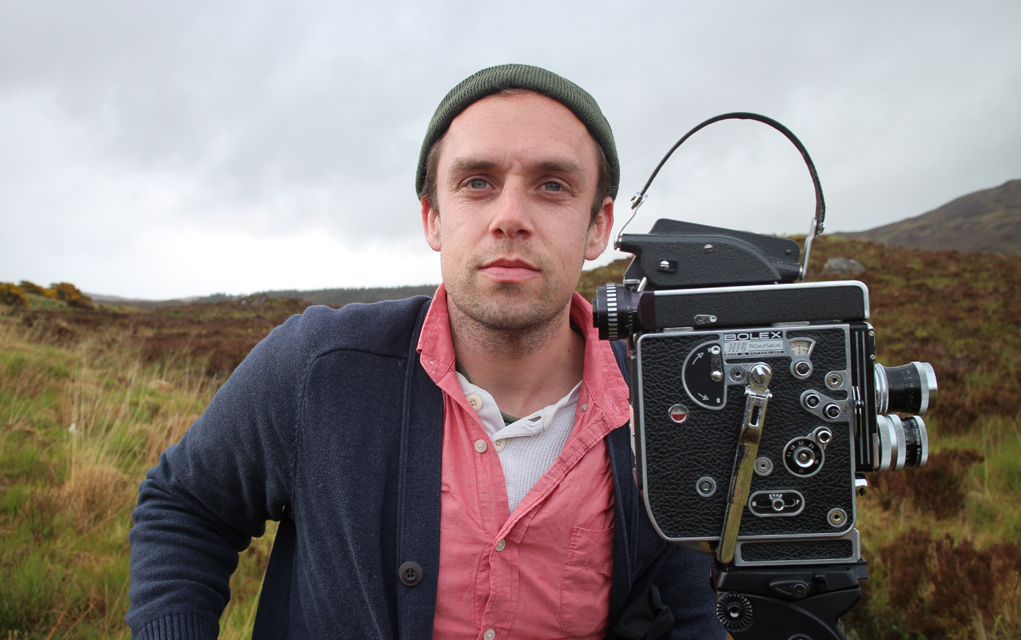
The third installation in the show departs from human notions of history to contend with the land itself. While typical histories of Gold Hill deal with the last 150 years in which the land has been useful to people, Eric Stewart is interested in exploring the land beyond the limits of human perspective.
For the Art Project, he produced a series of photograms — camera-less photographs made by exposing materials to light sensitive paper — of minerals that he collected around Gold Hill, like quartz and mica. The resulting prints are shadows and reflections of local rocks and minerals that he has blown up to large scale, making them appear luminous and ghostlike. Installed in a wooded area north of town, the images take on an otherworldly quality, especially in contrast to the density of the forest and the dirt.
“The way that I think about making photograms conceptually is a way of removing the photographer,” Stewart says. “Instead of it being about the individual looking at a landscape, it is about finding a platform for landscape to speak for itself. I find a political affinity with that shift in perspective. It is advocacy for nature in and of itself, not as a resource or something to be extracted.”
In addition to the installation, Stewart is hosting workshops and conversations throughout the course of the exhibition in hopes of creating a dialogue around his pieces and the landscape they depict. For Stewart, art is education, and as an art educator he is committed to creating a space for connection, community and conversation so that learning might be part and parcel with environmental action.
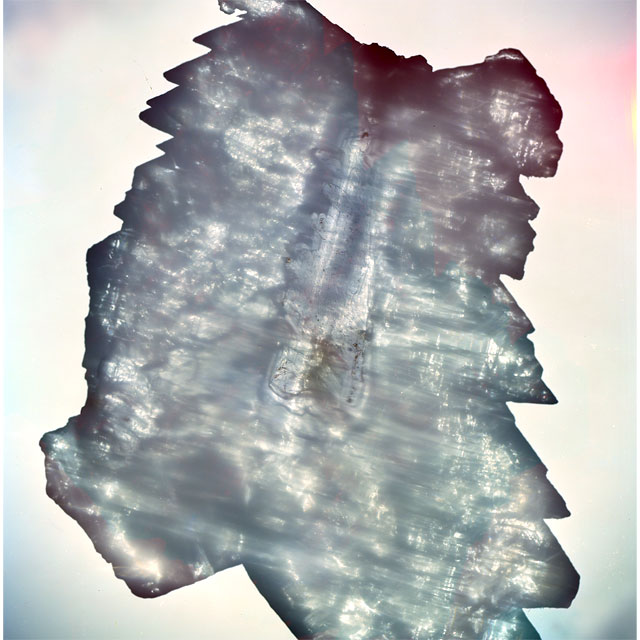
“Aldo Leopold said that to have an ecological consciousness is to look at a world full of wounds,” Stewart says. “So there are two different ways to look at the landscape in Colorado: You can look at these beautiful landscapes, or you can see a legacy of mining and of genocide. None of that is inherent in looking, all of that happens in the stories that we tell around landscape.”
All three of the artists in the Gold Hill Art Project explore the context of their hosting town, offering opportunities to stop and consider the different layers and aspects of the history locally and universally. Britton Newell is hopeful that the show will draw a large audience and that this exhibition is just the beginning of more art in Gold Hill.
But the true mark of her success will be if she gets it right at home, with the people of Gold Hill who have so generously opened their history and their home in the name of art.
On the Bill: Gold Hill Art Project. Launch party 5 p.m., Aug. 6, 491 College St., Gold Hill, Boulder. Exhibit throughout Gold Hill. Saturdays and Sundays only. Through Sept. 5. More information at blackcubeart.org/exhibition/gold-hill-art-project














